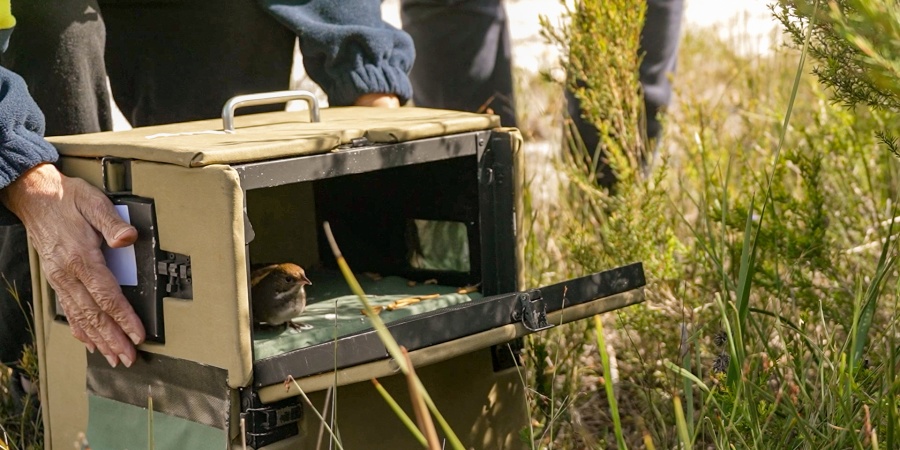
Noisy Scrub Bird being translocated. Photo - DBCA
Three noisy scrub-birds — known as ‘Djimaalap’ by the Minang Noongar people — have been successfully translocated from Waychinicup National Park to West Cape Howe National Park on WA’s southern coast in early September.
This marks the first translocation of the endangered noisy scrub-bird to West Cape Howe, more than a century since their distinctive calls were last heard in the area. Once thought extinct for over 70 years, the species was rediscovered at Two Peoples Bay Nature Reserve in 1961, sparking decades of recovery efforts.
All existing populations outside of Two Peoples Bay are the result of translocations carried out since 1983. Despite these efforts, fewer than 1500 individuals remain, confined to two small populations between Two Peoples Bay and Cheynes Beach, and on Bald Island.
Functionally flightless, this remarkable songbird depends on dense habitat and rich leaf-litter invertebrates to survive.
Each bird was fitted with a VHF radio transmitter before being released to track their movements. To support their reintroduction at West Cape Howe, extensive habitat assessments were conducted in 2024, alongside ongoing feral predator control and fire management.
Translocations will continue over the next three years (2025–2027), with the aim to establish a new population at West Cape Howe and bolster numbers at Two Peoples Bay, which lost 90 per cent of its habitat in a devastating 2015 bushfire.
DBCA Regional Ecologist Sarah Comer said the translocation team included DBCA staff, BirdLife Australia, Aboriginal Elders and ranger teams, and volunteers.
“The trial reintroduction of noisy scrub-birds to West Cape Howe — more than 100 years since they were last heard here — is an exciting step forward in our efforts to establish a third population,” she said.
“It has been incredibly rewarding to carry out this work in partnership with Traditional Owners, working together on-country through site selection, capture, and post-release monitoring.
“We hope these pioneering birds will show that the habitat is suitable, and if all goes well, they’ll be joined by more males and females in the coming years.”
This project is funded by the Australian Government’s Saving Native Species Program and delivered by DBCA under the guidance of the South Coast Threatened Birds Recovery Team. Key partners include BirdLife Australia, Binalup Aboriginal Corporation, Southern Aboriginal Corporation, Wagyl-Kaip Southern Noongar, South Coast NRM, and the Torbay Catchment Group.